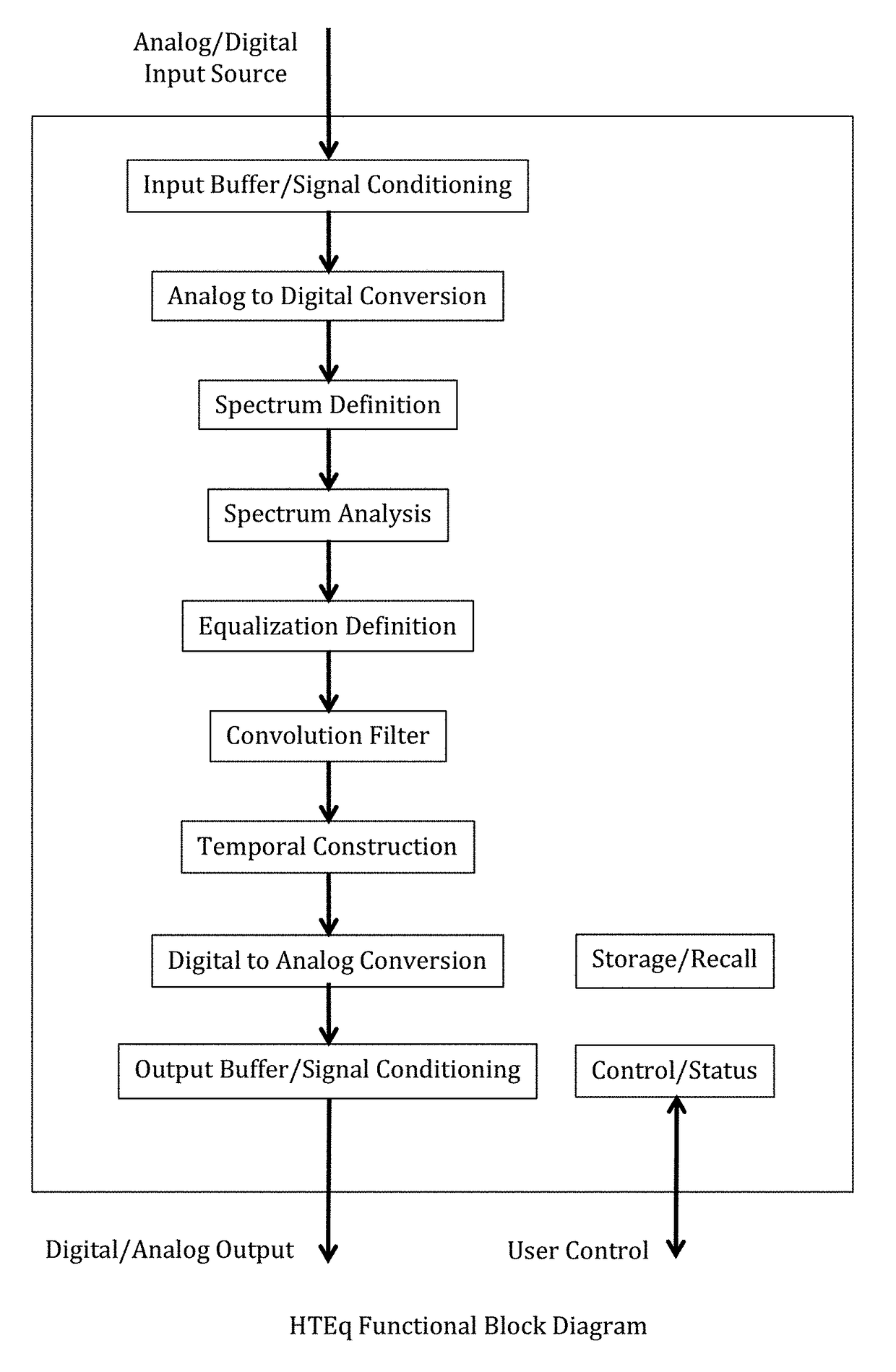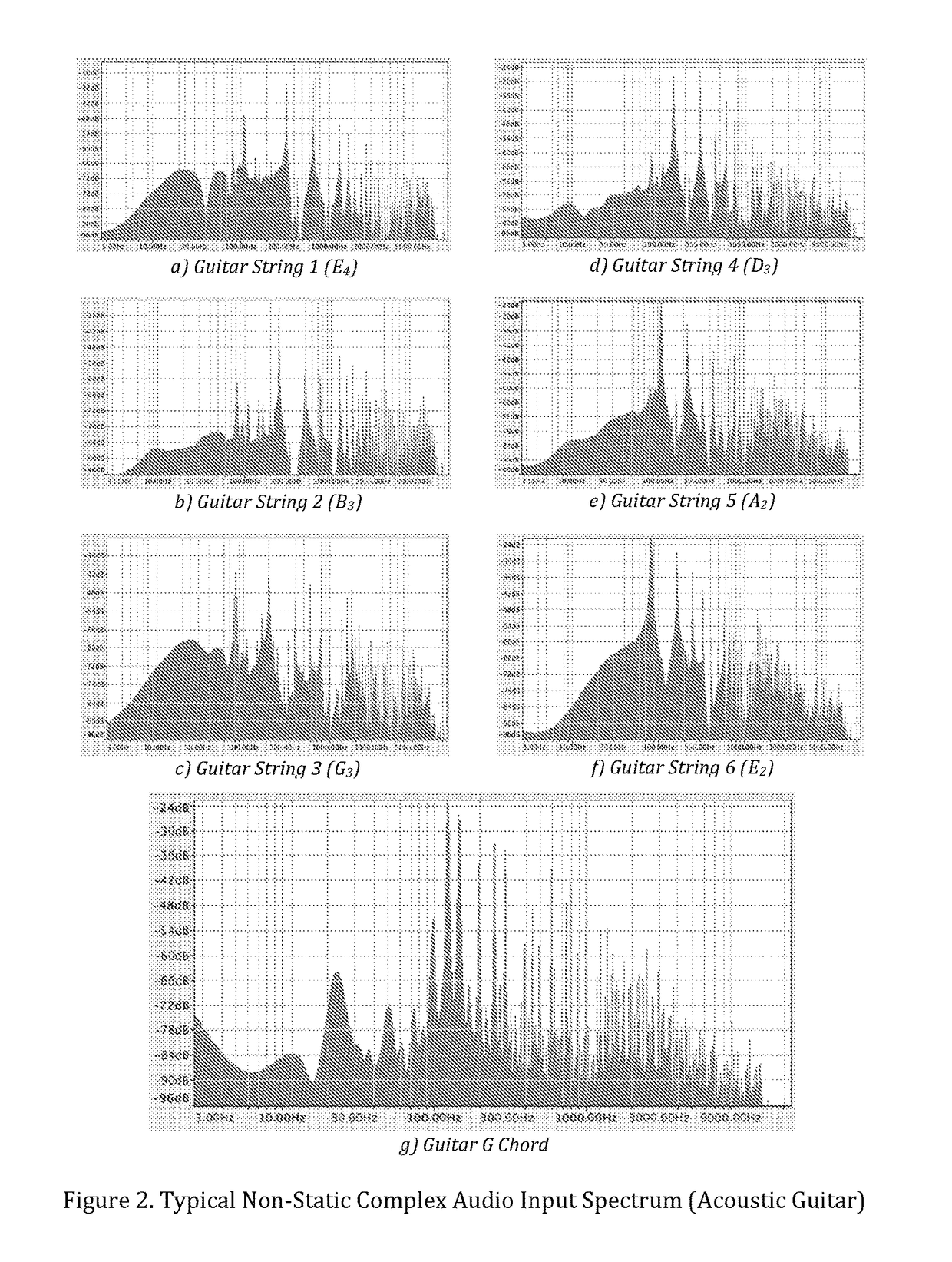Harmonic tracking equalizer
- Summary
- Abstract
- Description
- Claims
- Application Information
AI Technical Summary
Benefits of technology
Problems solved by technology
Method used
Image
Examples
Embodiment Construction
[0039]Described herein is an apparatus for and improved methods of carrying out dynamic equalization processing of an audio signal and methods of controlling such equalization processing to dynamically adjust the time varying spectrum to match a user specified target audio signal spectrum with low noise content.
[0040]In all cases, the HTEq only equalizes an input signal where a signal component is present in the input spectrum. FIG. 8 depicts the difference between the two operational processing of the HTEq; Harmonic and Non-harmonic operation.
[0041]In Harmonic operation, sets of Reference, Harmonic, and Sub-Harmonic input frequency components are automatically determined and noted for equalization. All other spectral regions are negated or set to a user-defined value. Once a Reference frequency is determined (for each set of frequencies) by noting the maximum magnitude component, harmonic and sub-harmonic components are readily defined for processing. A Frequency Set is determined ...
PUM
 Login to View More
Login to View More Abstract
Description
Claims
Application Information
 Login to View More
Login to View More - R&D
- Intellectual Property
- Life Sciences
- Materials
- Tech Scout
- Unparalleled Data Quality
- Higher Quality Content
- 60% Fewer Hallucinations
Browse by: Latest US Patents, China's latest patents, Technical Efficacy Thesaurus, Application Domain, Technology Topic, Popular Technical Reports.
© 2025 PatSnap. All rights reserved.Legal|Privacy policy|Modern Slavery Act Transparency Statement|Sitemap|About US| Contact US: help@patsnap.com



